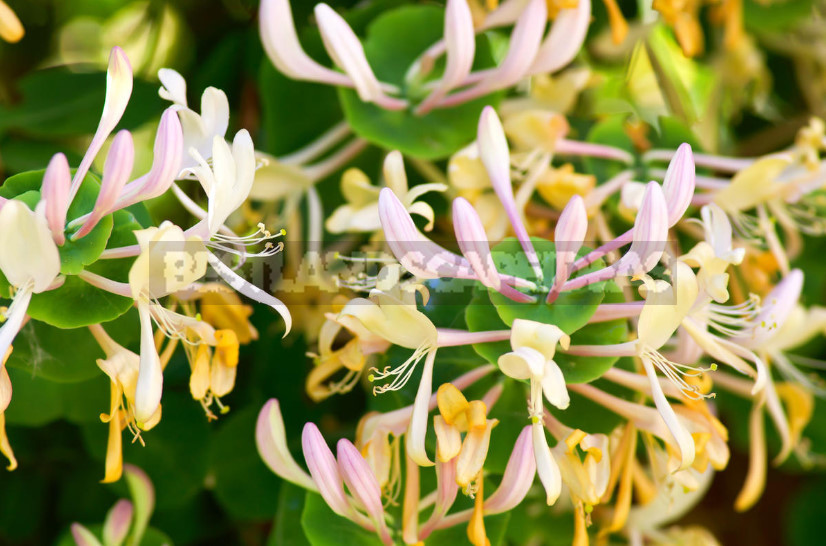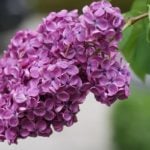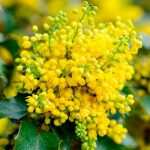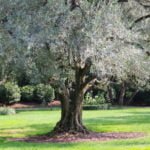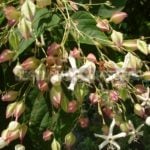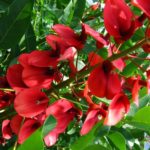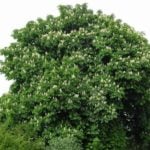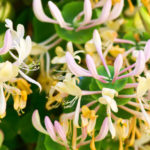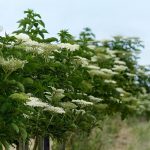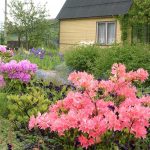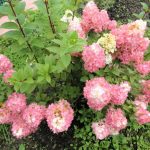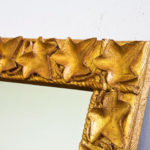In recent times a wide popularity of Lonicera caerulea var. edulis, gives generous yields blue fruits vitamin. But gardeners somehow completely forget about her closest cousin, Lonicera caprifolium. Jam from its berries to cook it will not turn out, but huge esthetic pleasure from contemplation of beauty of this plant is provided to you.
Plant description
In the family Caprifoliaceae there are about 200 species of honeysuckle (Lonicera). Among them there are only a few varieties with edible fruits. Berries with other members and inedible if consumed in large quantities can cause severe poisoning.
Decorative garden honeysuckle is not a particular variety. Culture includes many forms, different appearance, frost resistance, distribution area. Many of them are very decorative and enjoy the well-deserved love of landscape designers.
Plants are suitable for fencing the site, creating green groups, allocation of garden areas. Winding honeysuckle twine arbors and arches. Ornamental shrubs bloom from late may to mid-July. Closer to fall on them, there is a scattering of small, often poisonous fruit.
Inexperienced gardeners, first planted culture, often the question arises — how to distinguish edible honeysuckle from decorative? After all, the site can grow both species.
Garden form has oblong dark blue berries with a waxy coating. They ripen in late June. In landscape honeysuckle fruits are small, round, dark red or black. Located in pairs, often fused together. The vines, the berries seem to be glued to the sheets due to the short peduncle. Ripen in August.
However, among the cultivated varieties there are absolutely unmatched plants that can act as a delightful decoration of the infield. Let’s talk about Lonicera caprifolium.
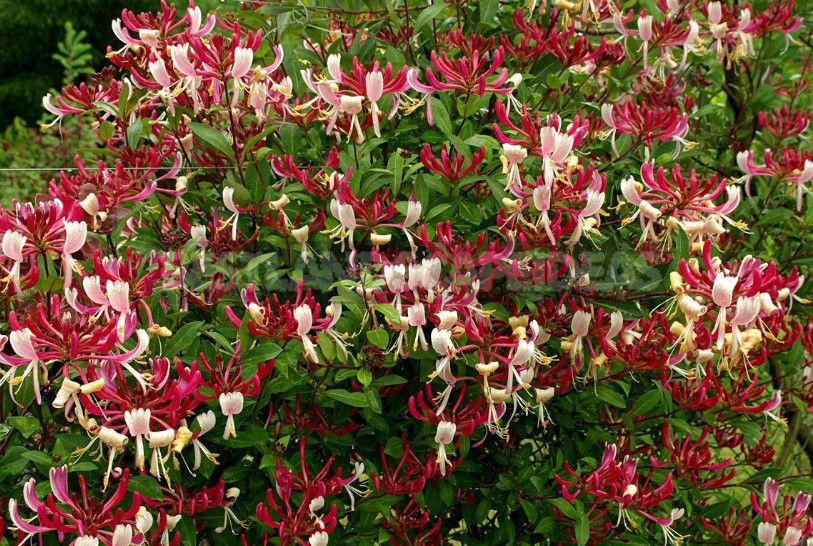
Lonicera caprifolium attract the attention of lush green crown and a cloud of amazing inflorescences that appear on the shoots during flowering in large numbers. Spectacular berries of red, yellow, orange or black extend the beauty of these plants until late autumn.
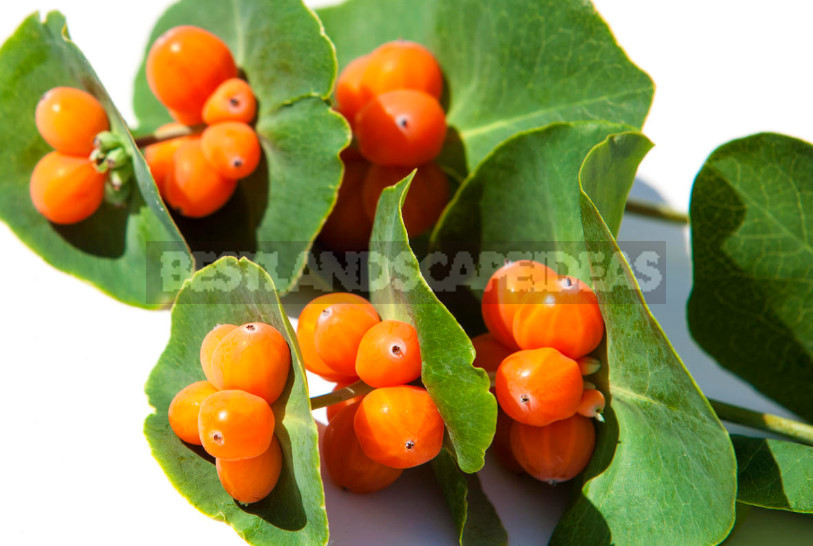
Among varieties of this crop can meet leafy erect shrub 1 to 4 m. They fit perfectly in the group landing on the site, will play a solo in a vacant corner of the garden or act as a stunning hedge. Shrub species have good winter hardiness and therefore will be able to develop in almost all regions of the country.
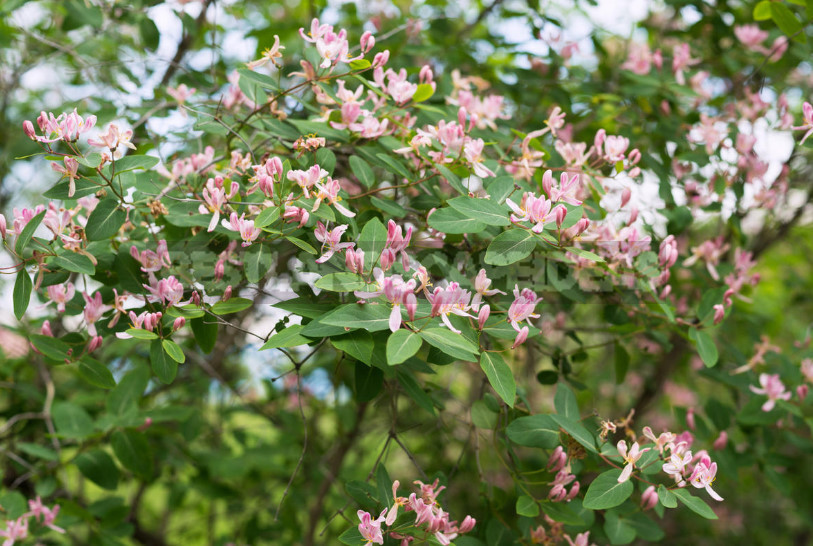
In addition to shrubs, the family Caprifoliaceae found a large number of spectacular vines, shoots which can reach a length of 6 m. Climbing varieties Lonicera caprifolium have less winter hardiness and feel most comfortable only in the southern regions of the country. But in the middle lane with proper preparation for the winter plants will develop well and please with their beautiful attire.
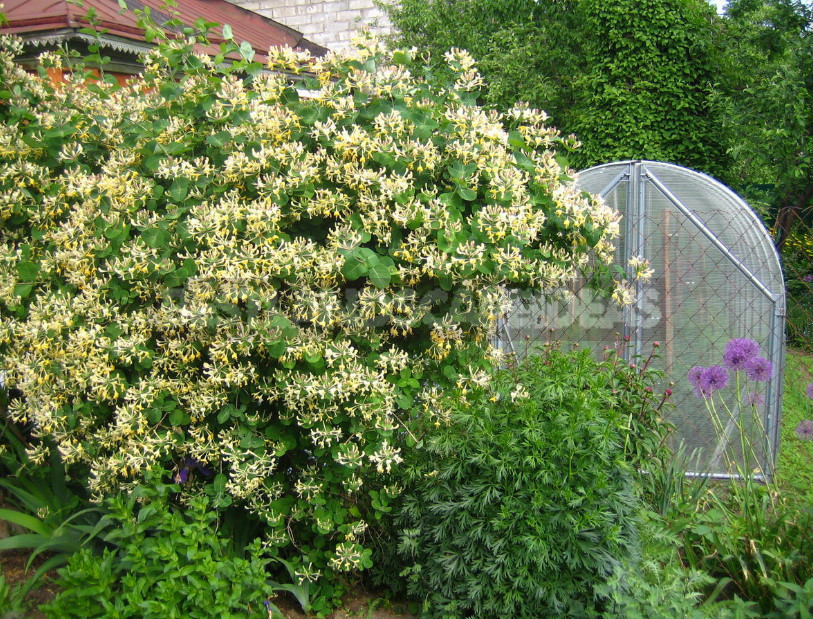
Lianoid honeysuckle is perfect for vertical gardening plot and will look gorgeous, curve garden arbor, fence, pergola, arch or a specially constructed trellis for them.
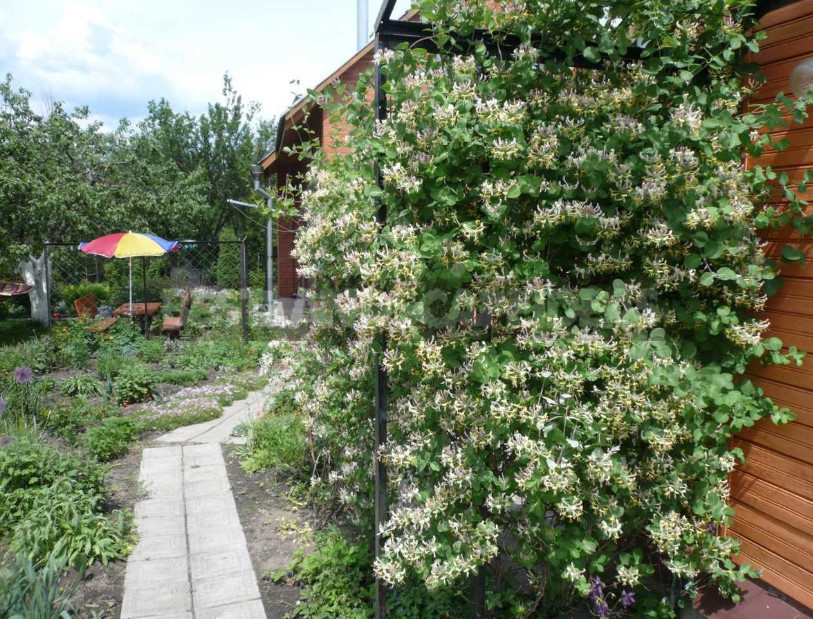
Types and varieties
Among the shrub forms stands Lonicera alpigena with a compact crown height of 1 m. it is characterized by dark green almost leathery leaves and paired double flowers without flavor, painted in yellowish color. Lush flowering shrub begins in the second half of may and lasts 2-3 weeks.
By September, ripen shiny red berries the size of cherries, thanks to this elegant “harvest” shrub becomes the center of attention in the dull autumn. Lonicera alpigena is characterized by shade tolerance, winter hardiness, durability and enviable resistance to pathogens.
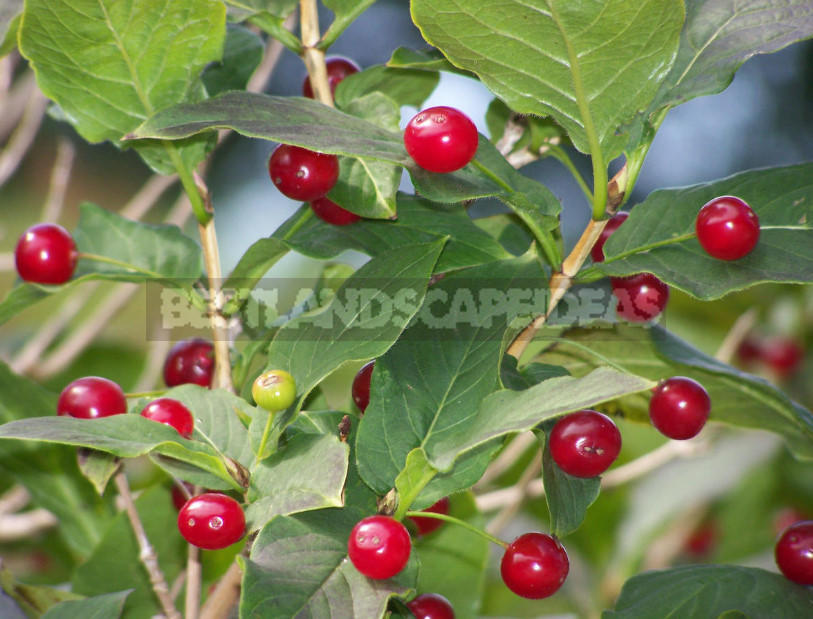
It is certainly worth noting Lonicera chrysantha-spreading dense shrub up to 4 m. the Plant has large (up to 12 cm) leathery leaves of dark green color and beautiful flowers of Golden yellow hue with an unmatched honey aroma.
Blooms profusely in late may-early June for about 2 weeks. In late summer fruits spectacular Carmine-red rounded berries. Kind of winter-hardy, unassuming in care, resistant to pests and diseases.
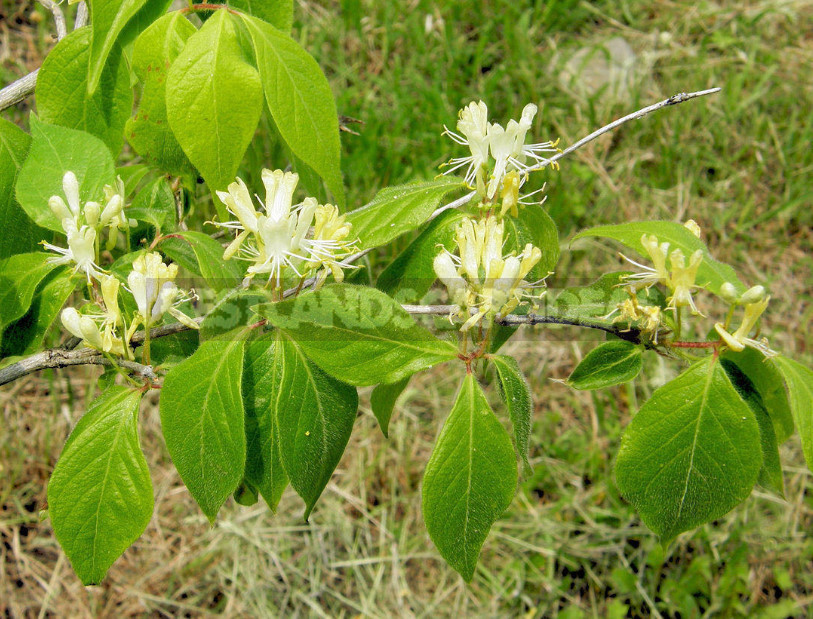
Deserves the attention of gardeners Lonicera maackii, which is a lush shrub up to 3 m. in early summer, it appears numerous snow-white inflorescences, which against the background of dark green foliage reminiscent of fallen snow. As withering flowers turn yellow and later turn into bright bright red berries. This variety is almost not affected by disease, it will please winter hardiness, drought resistance, as well as incredibly elegant decoration during flowering and fruiting.
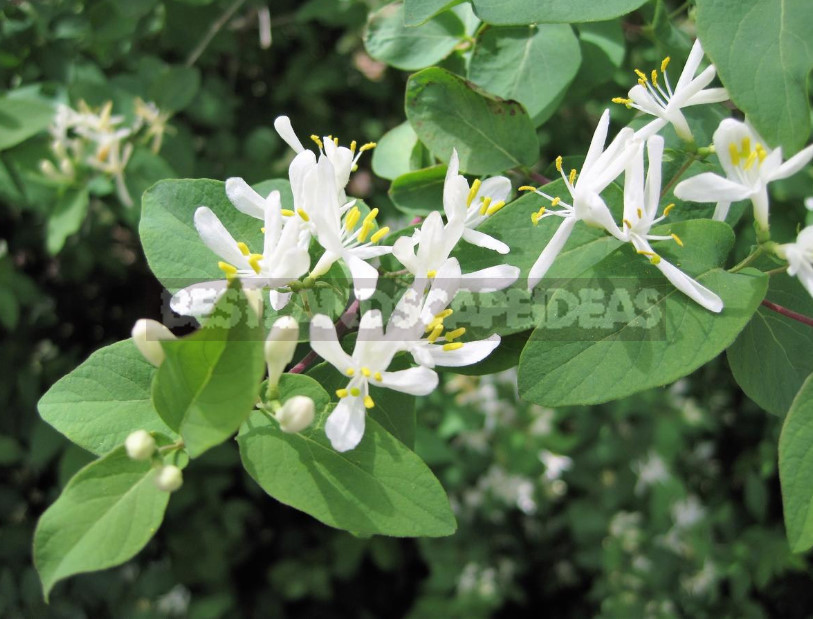
It grows well in our area Lonicera maximowiczii is a beautiful leafy shrub up to 2 m, from which we obtain excellent hedge. The plant in June will attract the attention of purple flowers, and in the autumn will delight the eye with Carmine fruits and long yellow foliage. Shrub perfectly tolerate a haircut, different hardiness and ruggedness.
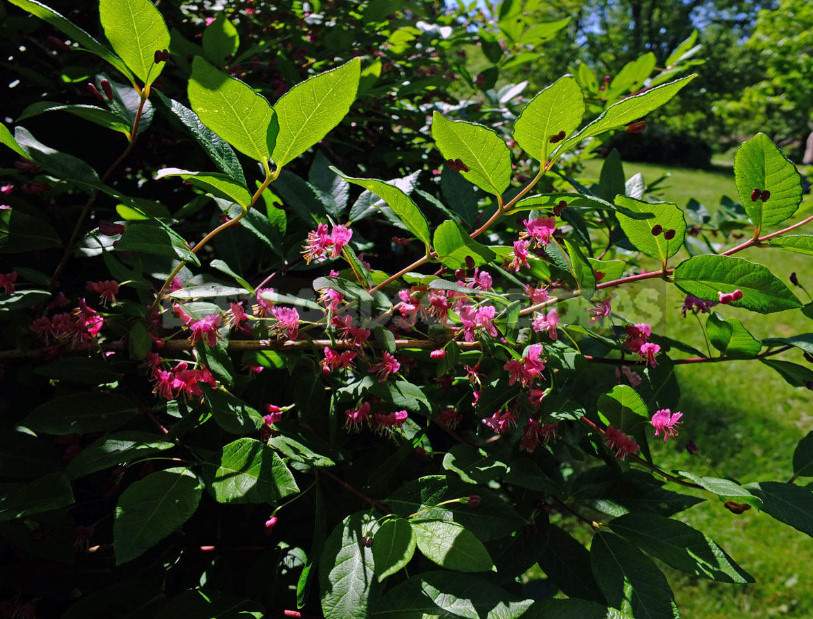
Very nice to look in the garden Lonicera xylosteum. This shrub up to 1.5 m with beautiful arched curved shoots and pubescent leaves – dark green on top and light green on the back side. This honeysuckle stands out paired two-lipped flowers are pale-yellow hue, and as they decay become bright yellow and fall to the many forms dark red rounded fruits with pubescent peduncles. Flowering shrub in may-June for 2-3 weeks.
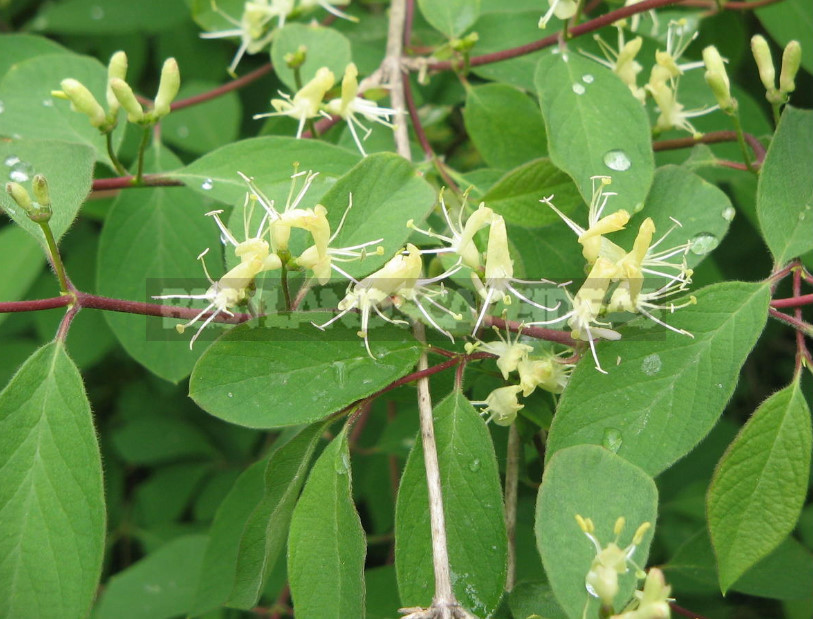
Lonicera xylosteum feels great in temperate climates and has several decorative forms.
Few people are indifferent to Lonicera involucrata-shrub up to 3 m with very beautiful dark green foliage and amazing inflorescences. Paired lemon-yellow flowers as flowering as well as bracts are painted in purple. And after flowering, which falls on the end of spring and lasts 10-12 days, the attention of “spectators” attract purple bracts with shiny black berries in the middle. This type is characterized by durability (up to 100 years), winter hardiness, shade tolerance, but has high requirements for soil moisture.
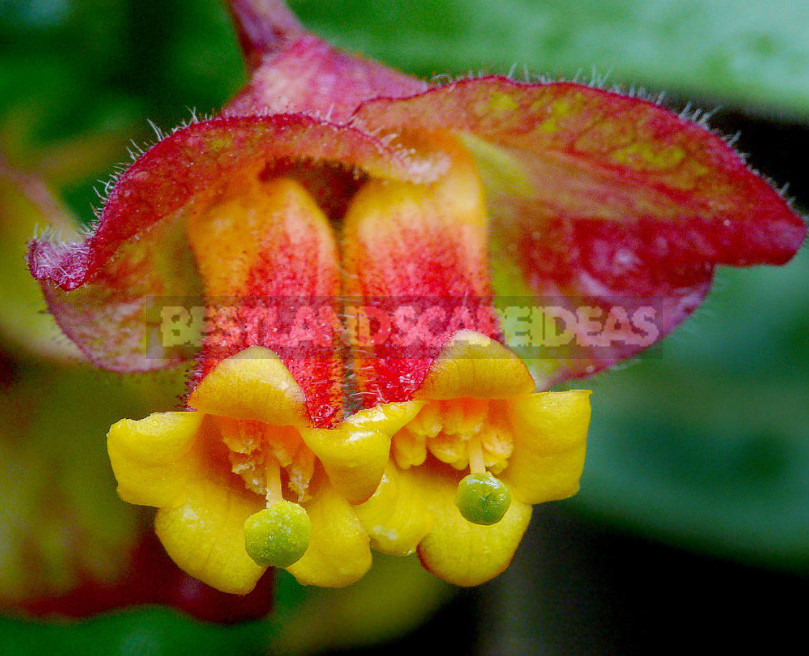
Feels great in the middle lane durable and very decorative Lonicera tatarica. This lush bushy shrub can grow up to 4 m. has oblong bluish-green leaves and paired pink flowers, which are kept on the shoots for 2-3 weeks in may — June. By the end of summer in place of inflorescences appear numerous berries, painted in yellow, orange or red. The disadvantages of the plant include vulnerability to viral diseases.
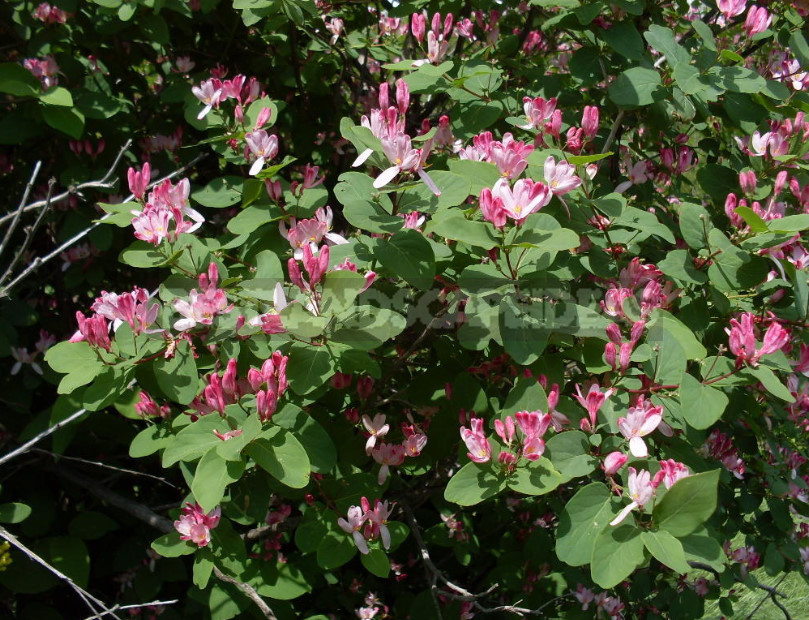
Among the decorative forms of Lonicera tatarica are the following:
- f. grandiflora, with very large white flowers,
- f. sibirica with red inflorescences,
- the cultivar ‘Alba’ with white flowers,
- the cultivar ‘Rosea’ with pink-crimson flowers and large leaves,
- the cultivar ‘Lutea’ with Golden berries,
- the cultivar ‘Nana’ with low compact foliage and small pink flowers.
Lonicera dioica is still a rare guest in our region. It is characterized by good winter hardiness, drought resistance and high decorative. The plant is erect or slightly branching shrub up to 2 m. Its leaves on the top are painted in bright green, and the bottom side have a gray shade.
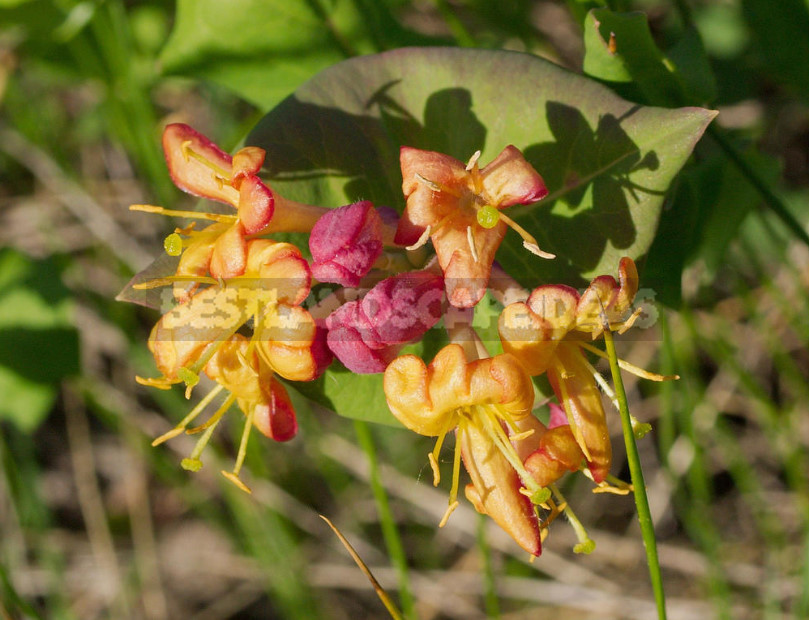
During the flowering period, falling at the beginning of summer and lasting 2 weeks, the Bush is covered with delicious greenish-yellow or purple-yellow inflorescences. In their place then appear oblong berries of bright red color, giving the plant in the autumn a special charm.
Among the lianoid varieties of culture is particularly popular Lonicera caprifolium. Shoots of this plant can reach a length of 6 m, which makes it indispensable for vertical gardening. Liana has beautiful leaves, painted from above in dark green color, and from below in bluish-grey.
Petals of large fragrant inflorescences Lonicera caprifolium on the inside are painted in yellowish-white tones, and on the outside – in dark pink. Lush flowering vines in June and lasts 2-3 weeks. In August, the decorative plant adds a bright orange-red fruit. Like all climbing honeysuckle, Lonicera caprifolium when grown in the middle lane will require shelter for the winter and more careful care than for shrub forms of culture.
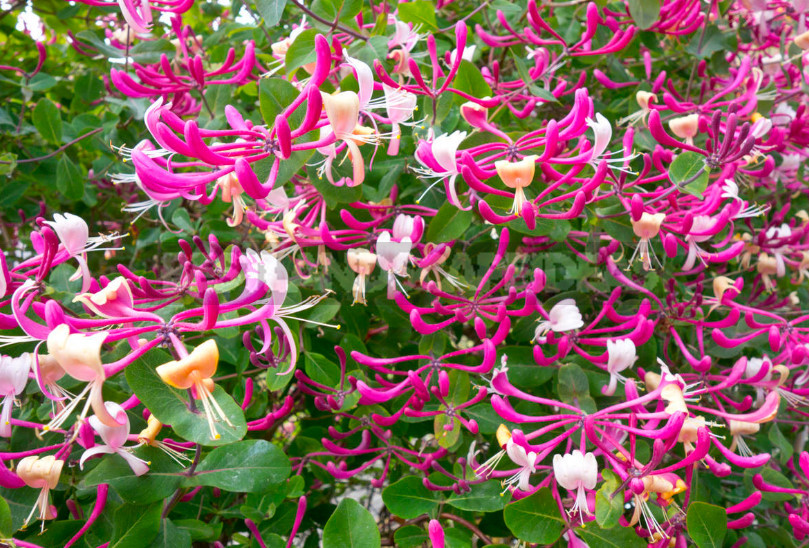
It is also worth noting the amazing beauty of the vine called Lonicera x brownii. Its shoots grow to a length of 2-3 m, the leaves are similar to the foliage of Lonicera caprifolium. The plant has fragrant flowers of original shape and spectacular orange-red hue. Lonicera brownii blooms profusely in late June and blooms for 2-3 weeks. It grows better in the sun, does not tolerate the lack of fertilizing and drought.
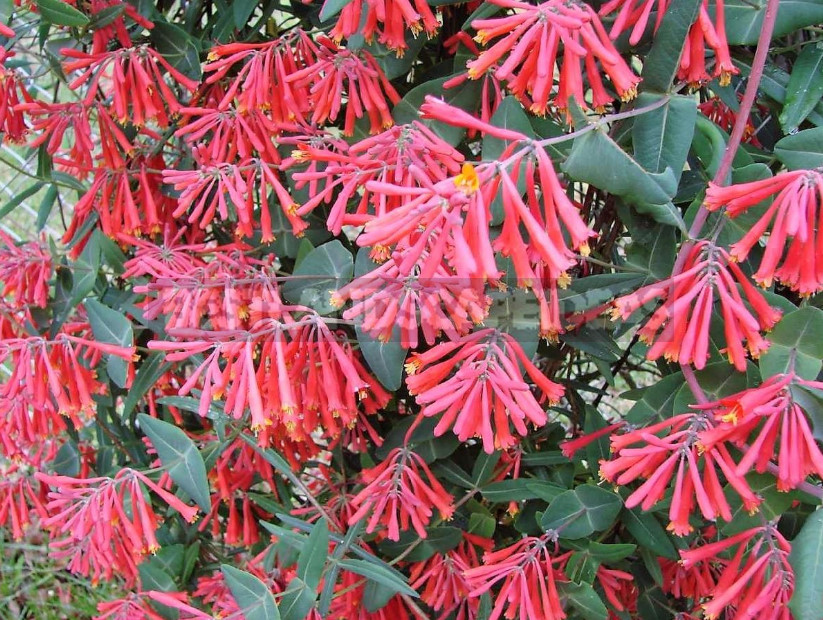
Among the varietal diversity Lonicera brownii is to highlight varieties ‘Fuchsioides’ with flowers of crimson hue and ‘Dropmore Scarlet’ with scarlet inflorescences.
Delightful during flowering curly Lonicera x heckrottii, which is covered with numerous inflorescences collected from several orange-yellow inside and purple outside flowers. Liana has a long flowering period-from June to August (in favorable seasons to October). Fastidious to soil fertility and humidity.
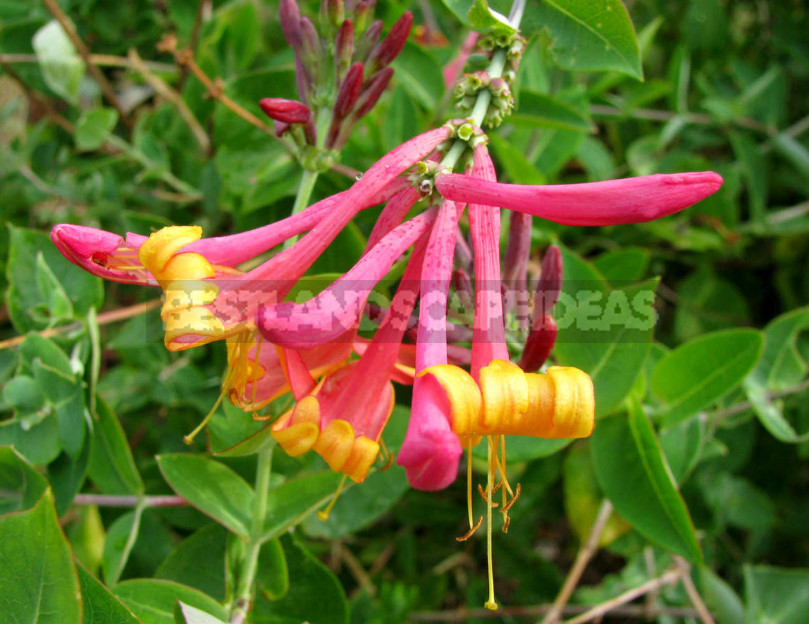
Lonicera x heckrottii is particularly interesting varieties ‘ Gold Flame ‘with cream-pink inflorescences and’ American Beauty ‘ with yellow-orange inflorescences.
It is impossible to ignore Lonicera x tellmanniana. The vine has shoots with a length of 2-3 m, large leaves (up to 10 cm in length) and the pretty blossoms are orange-yellow or bright gold color. Flowering is very lush, occurs in late spring or early summer, lasts about 2-3 weeks. Autumn vine is decorated with numerous yellow-orange berries. It grows well in a Sunny place, requires careful care.
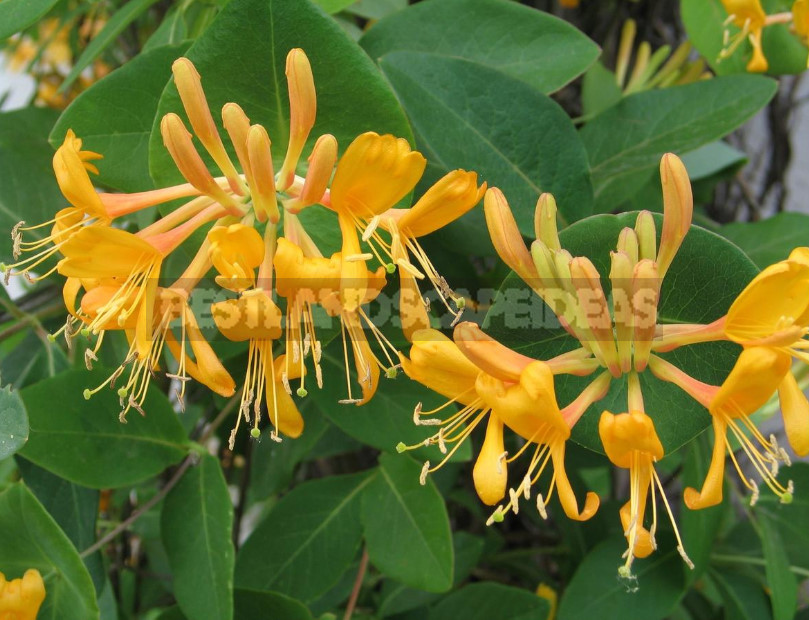
As you can see, there are many varieties of Lonicera caprifolium. It remains to choose for your site the one that most of all you like.
